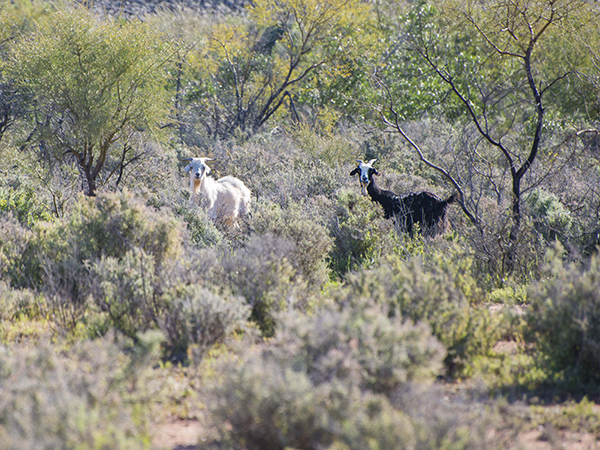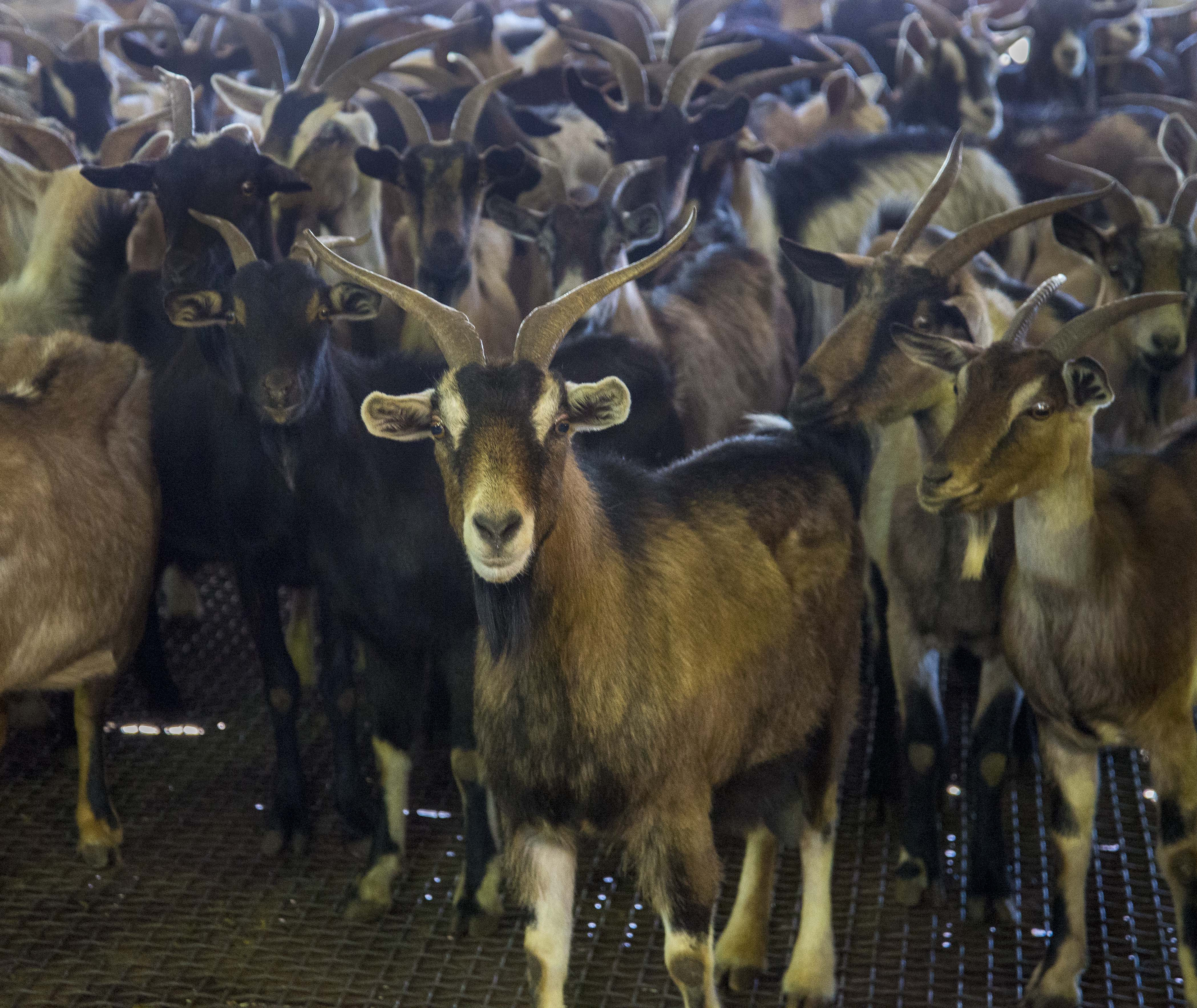The need for change in rangeland goat management in the Western Division

Rangeland goats in their very suitable habitat.
Large-scale eradication is not feasible for many reasons. In fact, we have so far failed to control the growth of the rangeland goat population to an estimated 5.8 million in the western division of New South Wales alone.
Siloed approaches to manage goats have so far failed. Localised eradication in protected areas is not working given the high mobility of goats from neighbouring pastoral areas. Commercial goat harvesting is sporadic and opportunistic and depends solely on favourable markets as an incentive for uptake. The tendency among some pastoralists to release under-weight and pregnant goats back in the wild after mustering to ensure a ‘reserve’ for hard times make things worse and effectively counteract attempts to reduce numbers in the wild.

Australian rangeland goats feature a variety of hair types, colours, and other morphological characteristics.
Collaboration is therefore key for success in the future. Adaptive management, whereby goat numbers are continuously controlled not only for commercial purposes but also for resource protection, is needed. Both conservationists and pastoralists should work together to achieve this goal. It’s certainly not an easy task and requires ongoing dialogue until a shared understanding of the ‘problem’ is reached. However, I believe it’s doable. And even more, I believe it’s the best way forward.
There are encouraging signs that things are indeed changing in the western division. The majority of stakeholders from both ‘pest’ and ‘resource’ groups have a better appreciation of each other’s position. For example, the Western Local Land Services (LLS) now acknowledges the value and potentials of the goat meat industry, in light of growing demand on the product globally. Some signs of this change in attitude has been reflected in the latest management plan of the Western LLS where goats are called “unmanaged rangeland goats”, rather than “feral”.
The industry, represented by the Goat Industry Council of Australia and Meat and Livestock Australia also recognise the critical need to protect natural resources and work on sustainability of the goat industry in the west. The industry is slowly moving towards semi-management of goats, which creates continuous and steady supply and contributes to the protection of resources. The timing for collaborative, adaptive management seems perfect. A seemingly sustainable global demand and the possibility to reach new markets form an opportunity to control and harvest larger numbers of goats to supply the exports markets. Thus collaborative management can lead to a win-win scenario for all stakeholders in the rangelands.



